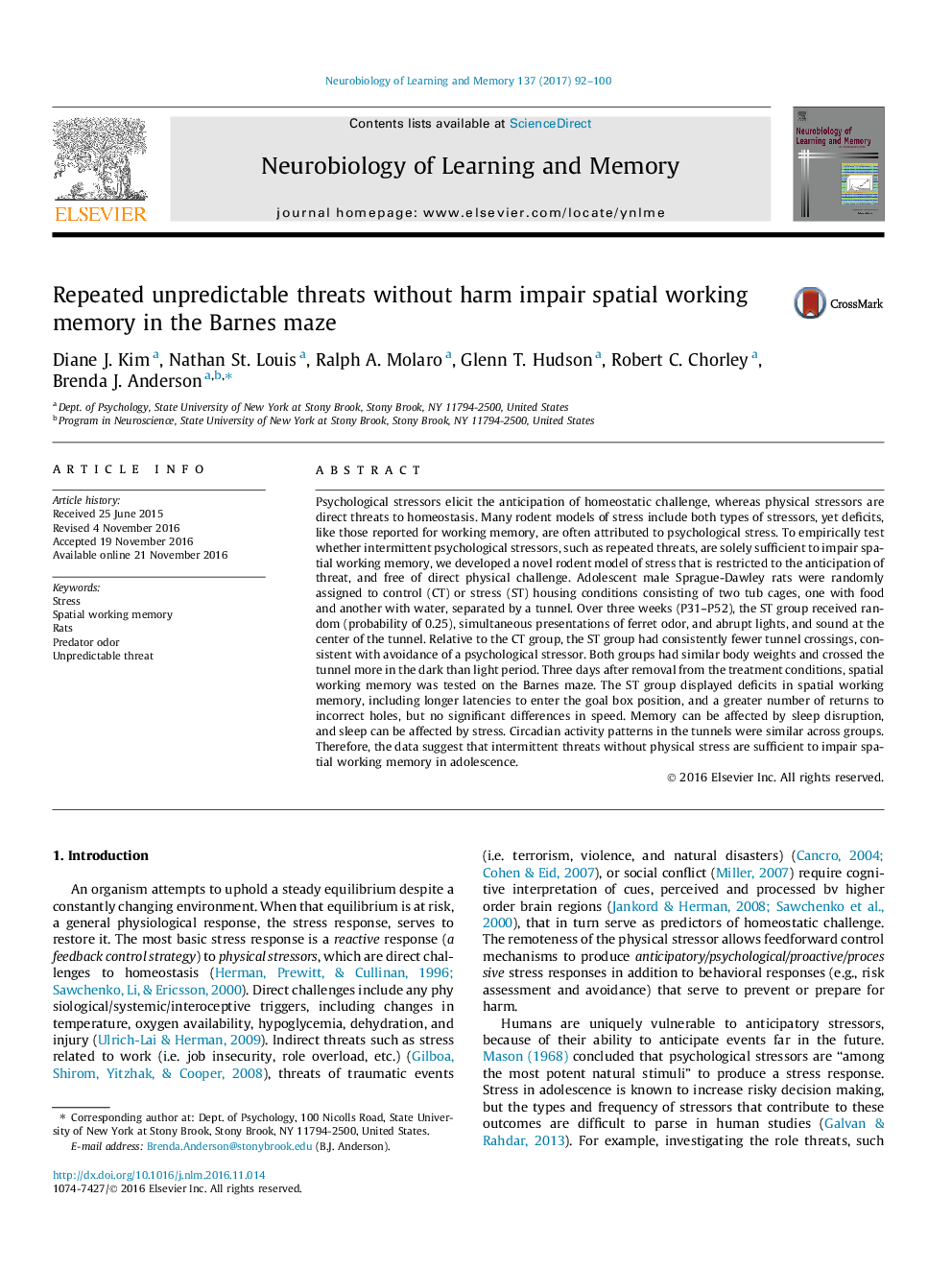| کد مقاله | کد نشریه | سال انتشار | مقاله انگلیسی | نسخه تمام متن |
|---|---|---|---|---|
| 5043375 | 1475137 | 2017 | 9 صفحه PDF | دانلود رایگان |
- An ethologically relevant habitat with a simple foraging task was used to house rats for 21Â days.
- Threats were produced by exposure to ferret dander odor, abrupt lights and sound.
- Repeated threats without challenges to homeostasis produced behavioral indicators of stress.
- After exposure to threats, spatial memory in late adolescence was impaired.
- Memory deficits were unlikely to result from sleep loss; circadian activity patterns were typical.
Psychological stressors elicit the anticipation of homeostatic challenge, whereas physical stressors are direct threats to homeostasis. Many rodent models of stress include both types of stressors, yet deficits, like those reported for working memory, are often attributed to psychological stress. To empirically test whether intermittent psychological stressors, such as repeated threats, are solely sufficient to impair spatial working memory, we developed a novel rodent model of stress that is restricted to the anticipation of threat, and free of direct physical challenge. Adolescent male Sprague-Dawley rats were randomly assigned to control (CT) or stress (ST) housing conditions consisting of two tub cages, one with food and another with water, separated by a tunnel. Over three weeks (P31-P52), the ST group received random (probability of 0.25), simultaneous presentations of ferret odor, and abrupt lights, and sound at the center of the tunnel. Relative to the CT group, the ST group had consistently fewer tunnel crossings, consistent with avoidance of a psychological stressor. Both groups had similar body weights and crossed the tunnel more in the dark than light period. Three days after removal from the treatment conditions, spatial working memory was tested on the Barnes maze. The ST group displayed deficits in spatial working memory, including longer latencies to enter the goal box position, and a greater number of returns to incorrect holes, but no significant differences in speed. Memory can be affected by sleep disruption, and sleep can be affected by stress. Circadian activity patterns in the tunnels were similar across groups. Therefore, the data suggest that intermittent threats without physical stress are sufficient to impair spatial working memory in adolescence.
Journal: Neurobiology of Learning and Memory - Volume 137, January 2017, Pages 92-100
